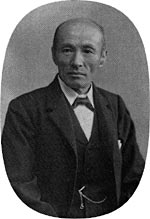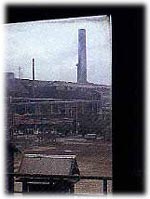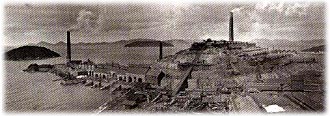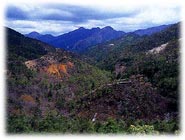Shozo Tanaka’s praises Sumitomo
The environment has risen to the top of the global agenda in the 21st century. In Japan, it was around 1900 that environmental pollution first emerged as a pressing issue, brought to national attention by environmental degradation caused by the Ashio Copper Mine in Tochigi Prefecture and smoke pollution issuing from the Besshi Copper Mines in Ehime Prefecture.
On March 23, 1901, at the 15th Imperial Diet, Shozo Tanaka*1, known for his activism in seeking to remedy the environmental degradation caused by the Ashio Copper Mine, commented favorably on the Besshi Copper Mines, in particular praising management’s decision to relocate the smelter from Niihama to Shisakajima, an uninhabited island in the Seto Inland Sea.
Tanaka commented: “The Besshi Copper Mines in Iyo is owned by Sumitomo. Since Sumitomo is sensitive to ethical considerations, people’s feelings, and the wider interests of society, it does not view business as synonymous with self-interested moneymaking.”
It was Sumitomo’s second director-general Teigo Iba who decided to relocate the smelter to Shisakajima Island and championed a major reforestation drive to restore the ravaged Besshi mountains. He used the pseudonym Yuo in later life.
From the judiciary to Sumitomo
Born on January 5, 1847, Teigo Iba was the eldest son and heir of Sadataka Iba, a local administrator, in Nishijuku in the Gamo District of Omi Province (present-day Shiga Prefecture). His childhood name was Konosuke. His mother Tazu was a sister of Saihei Hirose, Sumitomo’s first director-general. Toward the end of the Edo period, Iba studied the Sonno philosophy of revering the emperor. His mentor was Yoshisuke Nishikawa, a kokugaku scholar in Omi-hachiman, on whose recommendation Iba served the Meiji government by pursuing a career in the judiciary.
In September 1877, Iba was promoted from the Hakodate Local Court to serve as a judge at the Osaka Superior Court. Following the Satsuma Rebellion, the free and open atmosphere of the Meiji Restoration disappeared. A bureaucracy where one had to jettison one’s principles and flatter superiors to secure preferment was no place for Iba, a man determined to work for the benefit of the nation. Considering his next move, he even contemplated returning to his hometown to enter local politics. However, a visit to his uncle Saihei Hirose at the House of Sumitomo in December 1878 pointed him in a new direction. At Hirose’s suggestion, Iba decided to pursue a career with Sumitomo. Accordingly, Iba resigned from the judiciary and joined Sumitomo on February 4, 1879 at the age of 33. His monthly salary was 40 yen, less than half his remuneration as a judge. Although his wife Umeko had regrets about the financial impact, Iba’s embrace of Sumitomo’s business principles emphasizing the public and national interest trumped monetary considerations.

This photo was taken in Osaka.
Photo courtesy of Sumitomo Historical Archives
*1 Shozo Tanaka
1841-1913
Shozo Tanaka was a politician in the Meiji era. Born in present-day Sano City, Tochigi Prefecture, in 1841, Tanaka founded the Tochigi Shimbun Newspaper in 1879. Active in the Freedom and People's Rights Movement, he was elected to the prefectural assembly in 1880 and to the chairmanship of the assembly in 1886. He stood as a candidate in the first election to the House of Representatives in 1890, eventually serving six terms as a diet member. From 1891, Tanaka devoted himself to activism concerning the environmental degradation caused by the Ashio Copper Mine.

 EN
EN



